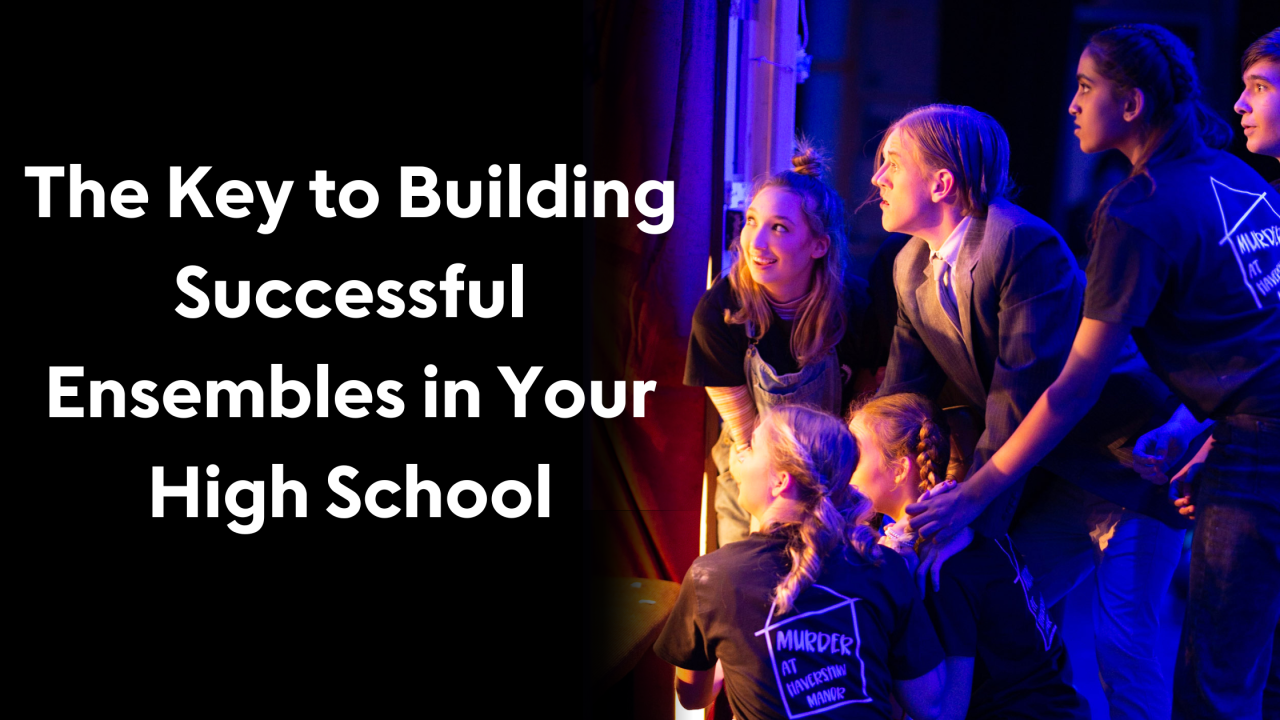Ensembles play a pivotal role in the tapestry of theatrical productions. Rooted in the principles of collaboration and unity, the essence of an ensemble stands as a testament to the very core of theatre. Within an industry where the very essence of its existence relies on the synergy of various talents, it comes as no surprise that ensemble-based work has risen to prominence as the cornerstone of countless theatrical presentations.
When performers feel confident and supported, especially as part of a collective effort, directors see the change on and off the stage. Voices and movements will become stronger, acting choices will become smarter, and ultimately, students will gain confidence not just in their role or in the production but, most importantly, in themselves.
Unfortunately, a common misconception surrounding ensemble work is the notion that ensemble shows are selected when a director’s pool of available talent is lacking. This opinion couldn’t be further from the truth! Ensemble productions tend to not only raise the overall level of talent onstage but also help to enrich a production by adding layers of depth and texture, transforming narratives into immersive experiences for audiences.
To build a flourishing ensemble, a host of strategies can be woven into the fabric of rehearsals and discussions. This includes incorporating inclusivity and voicing the value of each student’s contribution to the department. By fostering an environment where every role, regardless of its scale, is recognized as a building block of the larger vision- putting on a show, your ensemble will feel empowered to go above and beyond.
Further empowerment can be derived from the integration of Social-Emotional Learning (SEL) into the classroom’s curriculum. SEL, a multifaceted approach encompassing self-awareness, self-regulation, and interpersonal skills, not only equips individuals for personal success but also augments their capacity to contribute effectively within the ensemble. Most likely, you are incorporating SEL in your classrooms already!
Social-Emotional Learning (SEL) classroom ideas for theatre teachers:
- Group Discussions: Whether it is from a weekly round-table chat about current events happening in the theatre industry or debriefing after watching a performance. Facilitate open discussions during class or rehearsal. Encourage students to share their interpretations and personal connections to the show, its story, and its characters.
- Journaling and Reflection: Incorporate regular journaling sessions where students can reflect on their emotions, experiences, and personal growth throughout the rehearsal process. This encourages self-awareness and self-expression.
- Mindfulness Warm-Ups: Begin each class or rehearsal with mindfulness exercises or breathing techniques to help students center themselves, manage anxiety, and improve focus before engaging in theatre activities.
Incorporate different theatre techniques and games that rely on teamwork:
Viewpoints
Consider using approaches such as the Viewpoints method. Viewpoints is a movement-based pedagogical and artistic practice that provides a framework for creating and analyzing performance by exploring spatial relationships, shape, time, emotion, movement mechanics, and the materiality of the actor’s body. Originally developed by master theatre artist Mary Overlie and later expanded upon by directors Anne Bogard and Tina Landau, viewpoints are rooted in the domains of postmodern theatre and dance composition and operate as a medium for thinking about and acting upon movement, gesture, and the creative use of space. The techniques learned in the Viewpoints method will empower your ensemble to explore different modes of movement. It is the perfect solution, especially if your ensemble is having difficulties developing their physical and spatial awareness on stage!
Theatre Games
Theatre games you know and love, such as “Yes, And…” and the transformative “Mirror Exercise,” depend on collaboration, spontaneity, and communication within the ensemble. These activities require participants to listen intently, respond creatively, and construct collaboratively—a trio of skills needed for a brilliant ensemble.
Ensembles epitomize the beating heart of theatre, encapsulating the essence of collaborative creativity that is needed for a memorable performance. By making sure everyone’s contributions are valued, you will notice how it is helping them grow and how, using these smart techniques, ensembles can create theater that deeply moves and stays with the audience, leaving lasting memories.
Note: If you are interested in learning more about the Viewpoints method, check out Anne Bogart and Tina Landau’s landmark 2005 publication, The Viewpoints Book: A Practical Guide to Viewpoints and Composition.





